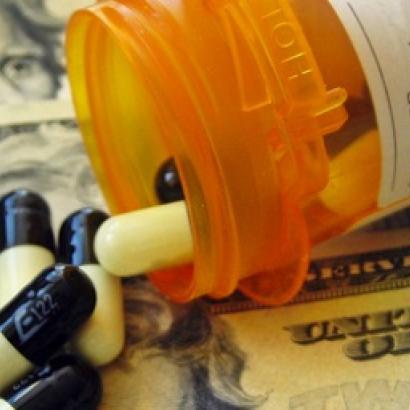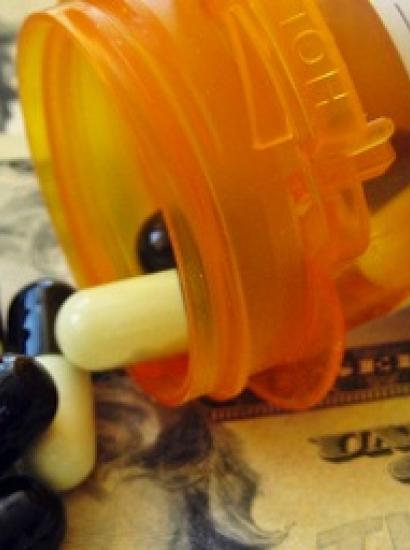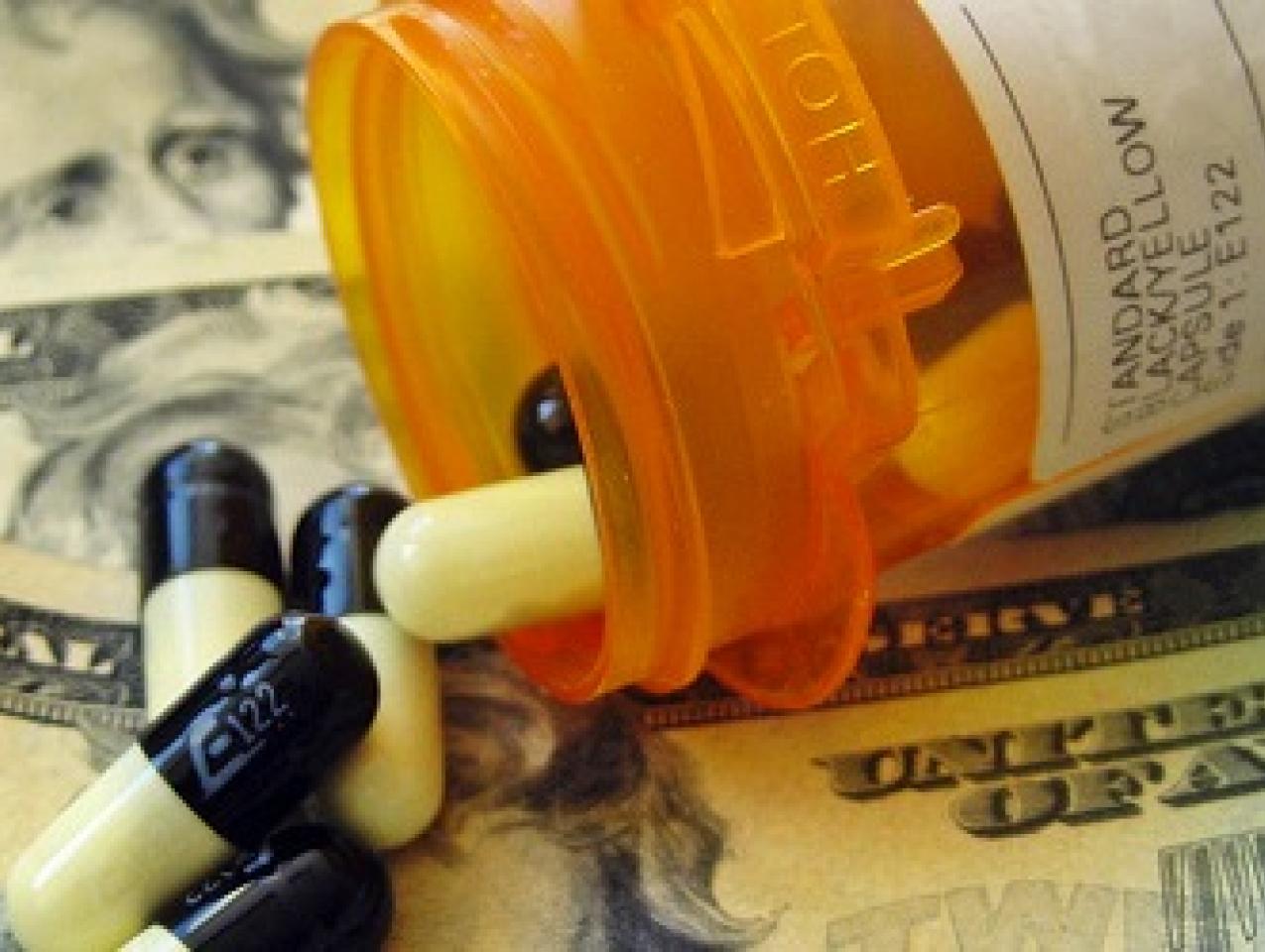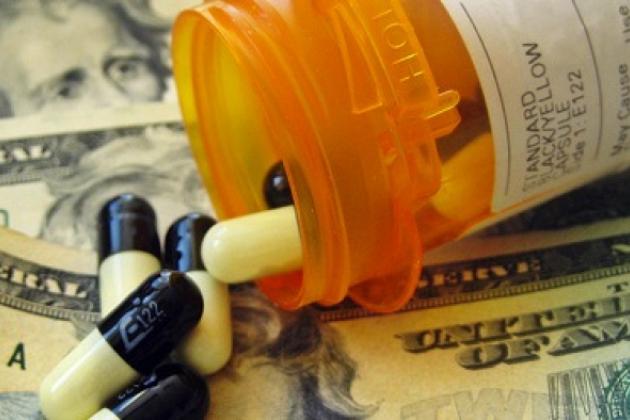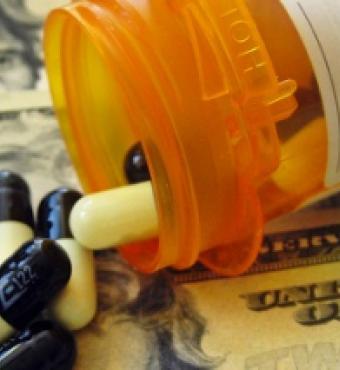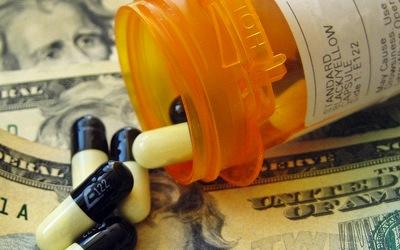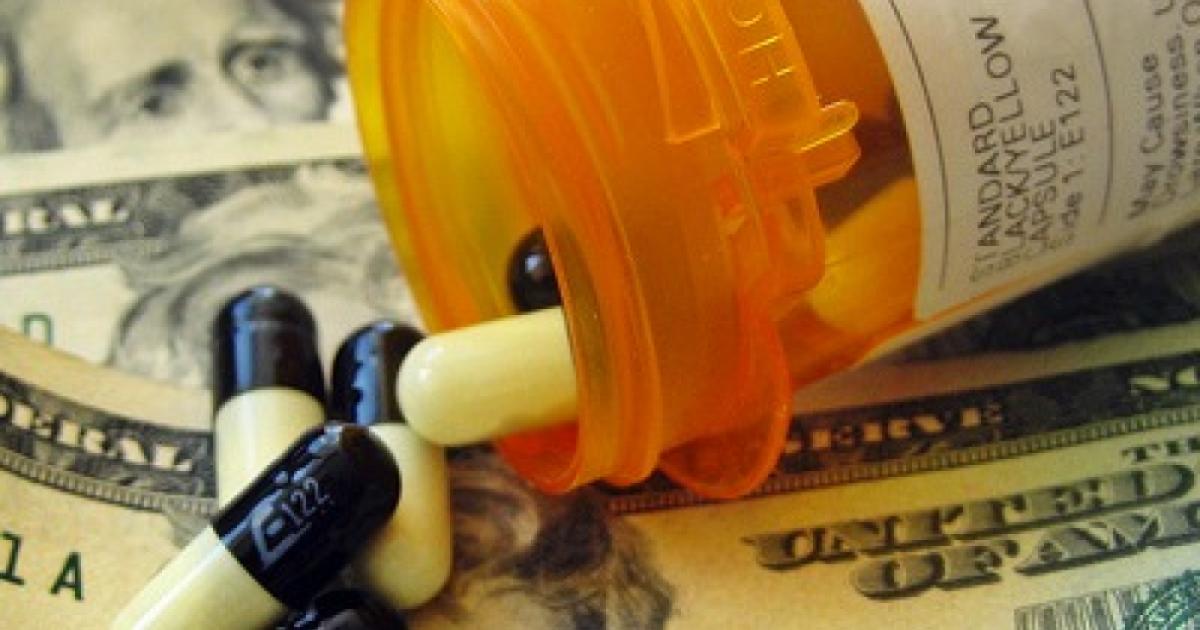- Politics, Institutions, and Public Opinion
- Health Care
Members of Congress can be astonishingly clueless about the shortcomings of federal agencies and how to correct them. At a press conference in February, U.S. Senator Barbara Mikulski (D-Maryland) and several bipartisan colleagues unveiled the Spending Reductions through Innovations in Therapies (SPRINT) Act, legislation intended to spur innovation in pharmaceutical research and development for chronic and costly health conditions such as Alzheimer's Disease, cancer, diabetes, and heart disease. The speeches were heavy on promises but light on insight.
According to the press release, the bill will invest "in public-private partnerships to ensure scientists and researchers are able to develop new safe and effective drugs"; shrink product development timelines; increase the number of drugs in the development pipeline; and expedite "the Food and Drug Administration (FDA) review process so that drugs can be brought more quickly to market to the patients who need them."
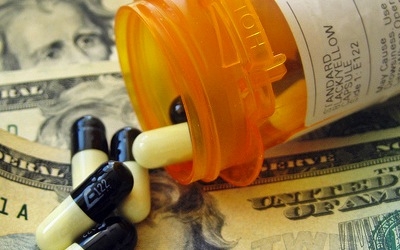
Photo credit: Images_of_Money
But the legislation fails to address what actually impedes the development of important new medicines. Either the legislators who oversee the FDA and control the nation’s coffers are woefully uninformed or they're poseurs more concerned with posturing than public health. (Neither of those would be a first.)
There is currently plenty in the development pipeline. The federal government has already announced a boost in spending on research and development for Alzheimer's Disease so that the Department of Health and Human Services’s spending in the next fiscal year (FY 2013) alone would exceed $500 million. Moreover, drug companies currently spend more than $65 billion on pharmaceutical R&D, and they know better than anyone that the big payoffs will be for treatments for the kinds of prevalent chronic diseases targeted by the legislation.
For example, more than a hundred drugs are currently in development for Alzheimer's Disease, dementias, and other cognition disorders, and almost 900 medicines are being tested for cancer. The treatments involve drastically different approaches, including vaccines, human gene therapy, and orally administered and injectable medicines.
The problem is to get the new drugs through the pipeline and into the marketplace. Unfortunately, government regulation has become a significant obstacle for drug developers and a disincentive for potential investors. Bringing a new drug to market now takes twelve to fifteen years and costs more than $1.4 billion. The number of drugs approved by the FDA each year is trending downward despite significant annual increases in the agency's budget. Perhaps the most ominous statistic of all is that drug manufacturers recoup their R&D costs for only one in five approved drugs, a deterioration from the one in four figure of about a decade ago.
Potential investors are responding to these disincentives. A recent survey of the intentions of venture capital firms reflects the negative impacts of drug and medical device regulation. It revealed that the firms have begun to avoid funding early-stage pharmaceutical and device companies in the United States, and both the dollars and the R&D are increasingly moving abroad.
Government regulation has become a significant obstacle to drug development.
Thirty-six percent of respondents said they plan to increase investments in life science companies in Europe, while only 13 percent plan to increase investment in U.S. companies; and 31 percent said they plan to decrease investment in life science companies in the United States, compared to 7 percent that plan to decrease investment in Europe. Sixty-one percent of the investors cited regulatory challenges as the primary reason; more specifically, they alluded to dysfunction, unpredictability, and risk aversion at the FDA. The proposed legislation would address none of these endemic problems.
Many of the challenges to pharmaceutical development are caused by the FDA's excessive risk aversion—unchecked, encouraged, or even created by Congress—that has forced companies to perform ever-larger, longer, more complex, and more expensive clinical trials. Expressing his industry's frustration at the FDA's capriciousness and intransigence, Fred Hassan, the former CEO of the drug company Schering-Plough, said of the regulatory climate: "What will it take to get new drugs approved? The point is, we don't know." Kenneth Kaitin, director of the Tufts Center for the Study of Drug Development, described the obstructionist culture at the FDA as having caused it to become viewed as "an agency that is supposed to keep unsafe drugs off the market, not to speed access to life-saving drugs."
The head of the FDA, Margaret Hamburg, continues to deny that her agency is in any way responsible for the crisis in drug development, but the reality is that the FDA has consistently pushed the envelope of its statutory authority in ways that stifle innovation. Although there exists a statutory requirement only to show that a new drug is safe and effective, the agency—sometimes spurred by Congress—has invented new criteria, including a requirement to demonstrate superiority over existing drugs, which it applies arbitrarily. Proving that a test drug is better than existing drugs often is much more difficult and vastly more expensive than just proving that it is safe and effective. If the efficacies of two medicines differ only marginally, the clinical trials must be very large in order to show a statistically significant difference between them.
If this new criterion was widely implemented, there would be less competition in the drug market, fewer treatment choices for physicians, and higher prices for drugs. Wyeth’s chairman and CEO Robert Essner described the impact of the requirement to show superiority this way: “If you’re the first company to get approved in a certain area and competitors can’t get on the market, the FDA is now establishing monopolies. And that’s certainly not their mandate.” Whatever one thinks of the existing requirements, surely we should not have an FDA that aggressively discourages competition.
The FDA’s demand that a new drug demonstrate superiority has contributed to the much-publicized recent shortages of various drugs. The fewer alternative medicines there are for a given ailment, the greater the vulnerability to shortages there are if the production and distribution of one of the drugs are disrupted for any reason.
The FDA has consistently pushed the limits of its authority in ways that stifle innovation.
The FDA has begun to impose what amounts to yet another criterion for new drugs: post-marketing studies as a condition of approval. Such clinical trials used to be relatively rare—and were required for patient populations such as the elderly or pregnant women that were not adequately represented in the earlier studies—but are now required in more than three-quarters of approvals.
And in 2008, Congress created still another criterion for new (and certain old) drugs to meet by enabling the FDA to require companies to produce a Risk Evaluation and Mitigation Strategy (REMS) whenever regulators perceived the need for one. A REMS is "a strategy to manage a known or potential serious risk associated with a drug or biological product," which could be said to encompass virtually every new medicine. The FDA's explanation continues, "A REMS can include a Medication Guide, Patient Package Insert, a communication plan, elements to assure safe use, and an implementation system, and must include a timetable for assessment of the REMS."
However, the various "elements to assure safe use," which can include limiting advertising only to certain physician specialties or dispensing of the drug only by specially designated pharmacies, can be so drastically restrictive as to constitute a new, limited, or conditional class of approvals. Even the FDA admits that it has applied these requirements over-aggressively.
Among drug industry-watchers, including those in Congress, there has been much hand-wringing about the dismal output from the drug R&D pipeline, but few have recognized the degree to which public policy is culpable.
The Mikulski bill does nothing to drain the regulatory swamp. In essence, it merely enables the Secretary of HHS to spend an additional $50 million on activities that are already under way in the government and the private sector. It contains only vague, boilerplate language about regulation that directs the Secretary to "facilitate innovative and expedited review" and "regular and ongoing communication" between FDA and drug developers, and to develop "regulatory science."
There are many genuine regulatory obstacles to the development of new medicines that Congress could address either via its legislative or its oversight authority. One is the several-year-old Memorandum of Agreement between two groups within the FDA entity that regulates medicines. The accord slows drug development and increases its costs by giving the drug review and drug safety offices equal responsibility for "significant safety issues" pertaining to medicines that are under review or have already been approved for marketing.
However, the drug safety group is so narrowly focused on "safety" that it largely ignores the fact that because all drugs have side-effects, safety cannot be evaluated in a vacuum. Instead, "safety" must be part of a risk-benefit judgment. Moreover, the group has shown overt hostility to both drugs and their manufacturers. Their motto might be: "If you don't approve new drugs, you avoid safety problems with them." These drug-safety zealots should be returned to a purely advisory role.
Another development that should concern congressional overseers is FDA’s having made it plain to drug companies that the agency considers the "accelerated approval" route for getting drugs to market rapidly to be too lenient. Introduced two decades ago, accelerated approval permits the FDA to issue what amounts to a limited, or conditional, approval of a new drug that is intended for a "serious or life-threatening disease" and for which there is an "unmet medical need." Intended as a “quick on the market, quick off” mechanism if the original positive results don’t pan out, it has worked well and saved countless lives, especially those of patients with some of the diseases targeted by the Mikulski legislation. But regulators don't like to feel under pressure to approve new drugs even when lives are at stake.
If members of Congress were genuinely committed to improving the efficiency of regulation in order to get new drugs out more quickly, they could authorize the outsourcing of some of the FDA’s functions. Recognizing that bureaucrats cannot duplicate the depth and breadth of the expertise that exists in academia, many foreign regulatory agencies commonly use non-government experts for reviews and approvals. Dozens of independent studies over several decades have recommended transferring some tasks performed internally by the FDA to outside experts.
Safety cannot be evaluated in a vacuum. It must be part of a risk-benefit analysis.
In fact, there is already a successful (but largely ignored) model for the evaluation of clinical data by an independent laboratory. In a two-year pilot program that lasted from 1992 to 1994, the FDA contracted out reviews of supplements to new drug applications and compared the results of these evaluations to in-house analyses. The contractor was the Mitre Corporation, a non-profit technical consulting company. In all five of the supplements reviewed by Mitre, the recommendations were completely congruent with the FDA’s own actions. Moreover, the time required for the Mitre reviews was two to four months, and the cost ranged from $20,000 to $70,000—extremely fast and cheap compared to federal regulators.
Another successful example of outsourcing is the regulation of medical devices in the European Union, which relies heavily on various sets of product standards and normally does not involve government regulators directly in product oversight. For low-risk devices, manufacturers themselves are allowed to certify that their products meet the necessary standards. For higher-risk products, manufacturers must obtain third-party review from nationally accredited, private-sector, profit-making entities—"notified bodies"—that test products, inspect manufacturing systems, and ultimately verify that EU standards have been met.
There is also a domestic model for the outsourced regulation of consumer products: Nationally Recognized Testing Laboratories (NRTLs), the prototype of which is Underwriter's Laboratories—a large, not-for-profit organization that tests and certifies a wide spectrum of products, many of which present inherent potential hazards to life and property. The NRTLs use hundreds of discrete standards, or guidelines, to certify product safety (but not effectiveness, except in a few special cases where the two factors are inextricably linked, such as fire extinguishers and smoke detectors). NRTLs are accredited by the Department of Labor.
Another way that Congress could help to balance drug safety, innovation, and the availability and price of new medicines would be to make regulators accountable for the unnecessary obstruction of drug development and delays in approval. This could be accomplished by the creation of a powerful, independent agency ombudsman whose actions would encourage regulators to act in the public interest.
The office would have to possess the following attributes: (1) independence from the agency, the FDA commissioner, and politicians; (2) access to independent expertise in relevant disciplines, including medicine, pharmacology, science, regulation, and law; and (3) the power to levy sanctions (such as loss of promotions and merit-pay bonuses) against FDA employees found to be responsible, individually or collectively, for flawed decisions or policies that constitute severe, avoidable errors.
With the new proposed legislation, certain members of Congress have shown once again that they misunderstand the nation’s problems and have no idea how to solve them. One also has to marvel at the grandiosity of the language in the bill. Do the sponsors think that the NIH and the pharmaceutical industry are unaware of and ignoring chronic diseases? Do they really think their vague, unimaginative $50 million program will make a difference?
Their magniloquence reminds me of a skit on Monty Python's Flying Circus TV show in which one character says to viewers: "Well, last week we showed you how to become a gynecologist. And this week on ‘How to do it' we're going to show you how to play the flute, how to split an atom, how to construct a box girder bridge, how to irrigate the Sahara Desert and make vast new areas of land cultivatable, but first, here's Jackie to tell you all how to rid the world of all known diseases."
Maybe they should give the $50 million to Jackie.
'







